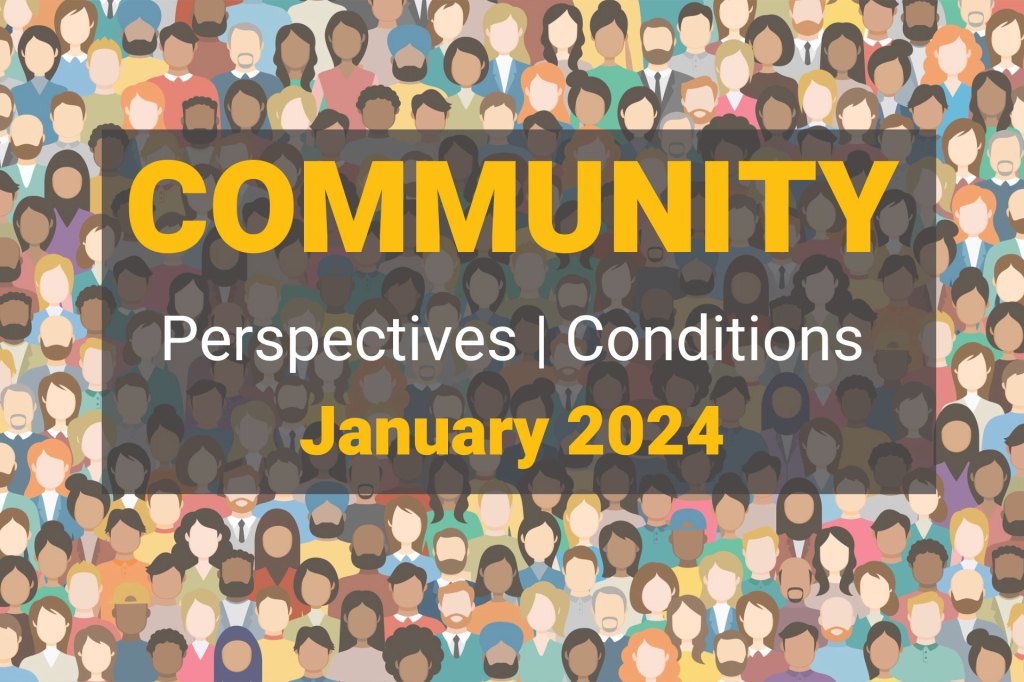Federal Reserve Banks across the country collect anecdotes from contacts and hone in on concerns for Federal Reserve Beige Book summaries, published eight times each year. Historically, insights about conditions affecting low- and moderate-income communities have come from the perspective of businesses. Several Reserve Banks began including “Community Conditions” and “Community Perspectives” sections in the fall of 2022. These sections provide insight into local changes through direct accounts of nonprofit and community leaders and workforce professionals serving lower-income people. Here are some takeaways from the January 2024 Beige Book, which was prepared at the Federal Reserve Bank of Philadelphia and based on information collected on or before January 8, 2024.
Please note that the Beige Book summarizes comments received from contacts outside the Federal Reserve and is not a commentary on the views of Federal Reserve officials.
“Households in the District have experienced greater difficulty meeting financial obligations. Though credit has become harder to get, many families have accumulated high debt burdens. To help ease these burdens and protect households, state and city governments have responded with new policies. Notably, New York State has enacted legislation prohibiting medical providers from reporting medical debt to credit bureaus, preventing the cascading effects of adverse credit reporting on household finances. Other policies have distributed funds directly to individuals, including one providing funds to cover back rent to residents of public housing managed by the New York City Housing Authority.”
– New York Fed, Federal Reserve 2nd District, Community Perspectives
“Nonprofit childcare providers reported that funding had decreased even as demand for childcare services had increased during the past six months. Pandemic-era funding, such as that from the Child Care Stabilization Grant program that ended in September 2023, had primarily been used to pay staff salaries or bonuses. With the loss of government funding, one Cleveland-area provider said, ‘We are forced to increase costs for private-pay families as the funds available are not sufficient to provide a living wage to our staff. It has also put a lot of pressure on us to privately fundraise to fill the gap.”
– Cleveland Fed, Federal Reserve 4th District, Community Conditions
“Community and nonprofit contacts saw a modest increase in economic activity over the reporting period. Workforce development agencies said that continued tight labor market conditions were making it easier than usual for individuals facing barriers to employment to find work, and economic development agency contacts reported the approval of several new projects in their areas. In contrast, a state government official saw some decline in tax revenues. Contacts at small business development organizations said that high interest rates combined with other rising costs, such as for insurance, were deterring clients from expanding. While the slowing rate of inflation was welcome, social service organizations noted that low income consumers were still facing the challenges of rising housing costs, additional expenses for clothing and heating during the winter months, and the end of COVID-era government financial support.”
– Chicago Fed, Federal Reserve 7th District, Community Conditions
“Food insecurity reportedly worsened across most of the Tenth District as food assistance organizations reported substantial increases in the number of persons served compared to the same time last year. Most organizations said they were serving more working families and seniors. While high food prices continued to be an issue, organizations noted that the burdens of other cost-of-living increases significantly contributed to growing food insecurity. Nearly all organizations reported declining donations leading some to cut back their services, such as offering families assistance once every sixty days rather than every thirty days.”
– Kansas City Fed, Federal Reserve 10th District, Community Conditions
“Demand for nonprofit services remained elevated. Housing affordability continued to be a top concern, with higher rent outpacing income among many renters, and higher mortgage rates making home ownership less attainable. Nonprofits noted that families are also struggling with the costs of healthcare, food, utilities, and transportation. Access to affordable childcare remained a key barrier to parents’ participation in education and the workforce although some contacts noted that more work schedule flexibility has been helpful. Contacts said that childcare subsidies, while helpful, are not immediately available and come with limitations. An executive at a workforce development board said she has never seen so much interest in solving childcare issues, particularly among employers.”
– Dallas Fed, Federal Reserve 11th District, Community Perspectives
“Communities across the District continued to confront widespread shortages in affordable housing and associated increases in homelessness and housing insecurity. Demand for mental health services and food assistance programs remained elevated. Community service organizations continued to face challenges recruiting and retaining skilled workers. Funding availability was mixed, as some nonprofit organizations struggled to raise money while others benefited from an uptick in financial support from local governments. One contact observed that some nonprofit organizations opted to maintain hybrid or fully remote work arrangements to reduce or eliminate office rental costs.”
– San Francisco Fed, Federal Reserve 12th District, Community Conditions
Visit the January 2024 Beige Book report for a full national summary and more information about economic conditions from each Reserve Bank, including labor markets, financial services, real estate, and more.




